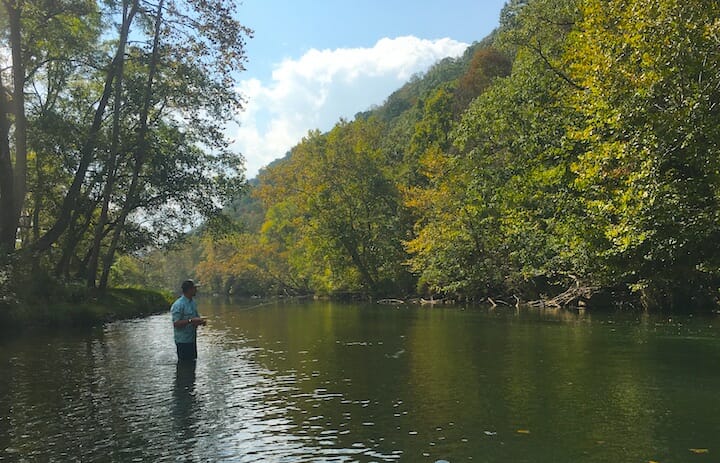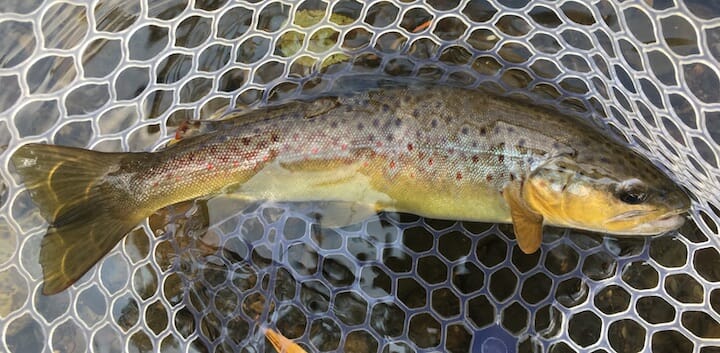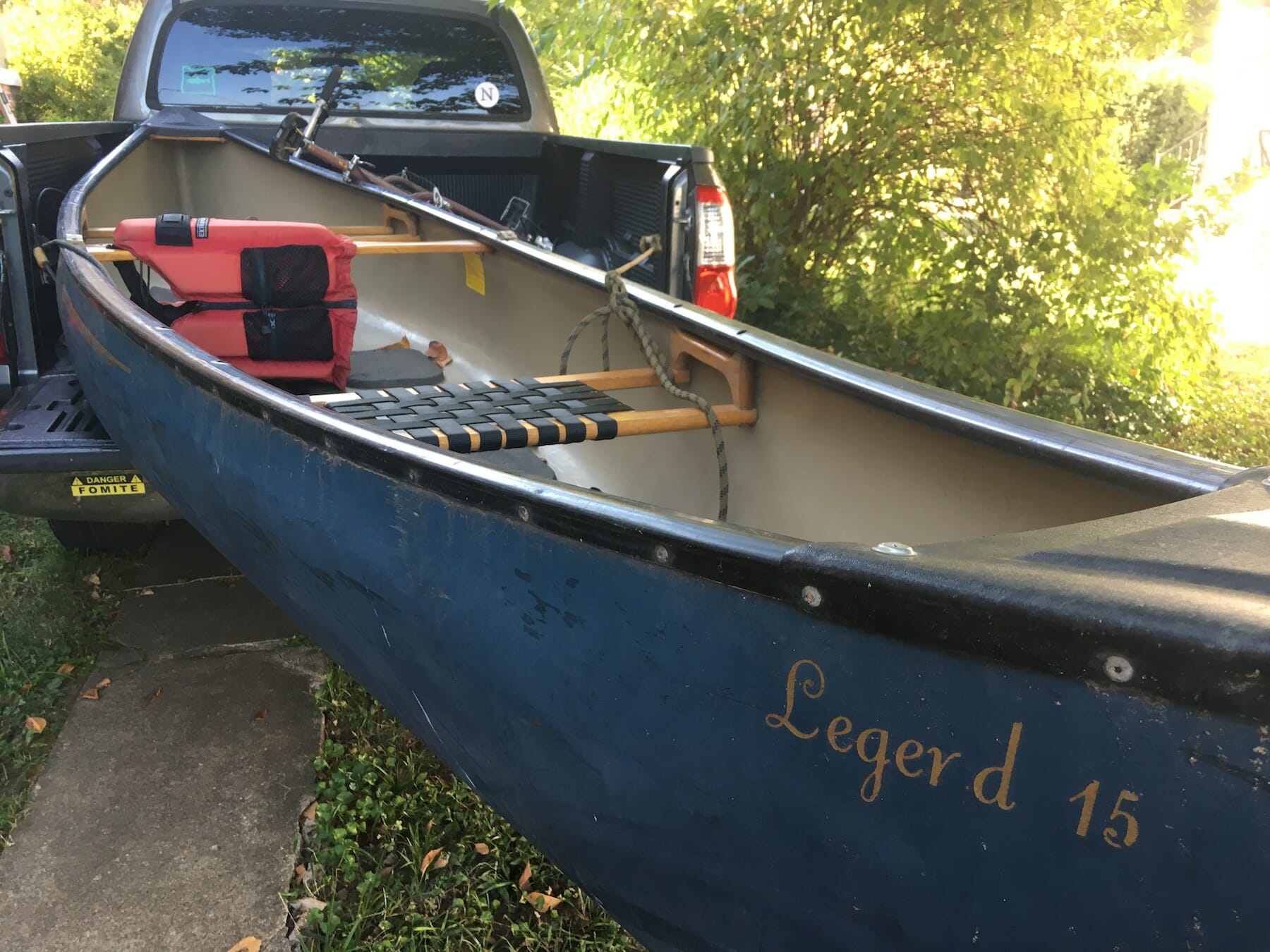The canoe had been sitting for a while.
For the better part of two decades it had served me well, dutifully getting me down Appalachian rivers on trips during which trout, bass and sometimes even ducks and geese were the quarry.
But then, about two years ago, I finally made the leap into the raft world and haven’t looked back. The raft -— it’s actually a cataraft — not only gets me and a buddy down the river, it’s actually possible to flyfish efficiently while underway.
But no craft is perfect for all conditions. Our region is unseasonably dry, and that’s even affecting our tailwaters, with dam releases being minimized to keep reservoir levels from dropping too precipitously.
So when my friend Sam Dean and I had a day to get out, the canoe made more sense for hustling from wading spot to wading spot.

So we loaded up the faded and scratched blue Dagger Legend and hit the river.
It felt good to be back in the familiar boat. There is something comforting about sitting low in the water, and feeling a canoe react quickly to powerful paddle strokes. In a raft you purposely move with the current, or even slower. With a canoe, you make progress.
After launching, we blew through some poor water and, as soon as the canoe ground to a stop in the first riffle, we jumped out and started fishing.
There was some hope the fish would be chasing streamers and we did, in fact, have a few chasers. But nymphs were the ticket. The fish were concentrated in deeper runs, buckets and pockets. Fishing wasn’t great but it was decent for chunky browns and rainbows in the 10- to 13-inch range.

We made good progress, hustling between wading spots and taking our time when we were actually fishing. As we headed toward one of our favorite runs were paddled extra hard in anticipation.
But then we heard something that would change the complexion of the trip: thunder.
We reached the run and I pulled out the phone to check the weather radar. It wasn’t pretty.
“We’re about to get smoked,” I told Sam.
And here’s where having the canoe really paid off. We pulled our gear out, turned the boat over on the edge of the bank, and braced it with the paddles. In our effort to go light on gear neither of us had brought rainjackets. It wasn’t cold, but the idea of getting completely soaked wasn’t appealing.
The rain started moments after our shelter was set up. There we huddled, laughing and dry, for the duration of the maelstrom.
The storm lasted only 20 minutes or so, Unfortunately the impact was longer-lasting. Heavy wind gusts had blown millions of leaves from drought-stressed streamside trees into the water. We tried our best to fish as we hit a few more spots, and even scared up a couple more rainbows. But it was pretty much a fool’s errand. So we didn’t dally as we headed to the take-out.
Despite that little bit of rain we’re still well behind and rivers are still low. The raft will come out in due time, but I suspect the old boat may be out of its semi-retirement for a while.
Mark Taylor is the communications for TU’s eastern region.



